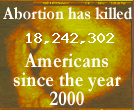WHAT A NEAT OPPORTUNITY !!
For more information and to register for participation, please visit this site:
http://www.birdsource.org/gbbc/
What is the Great BackYard Bird Count?
The Great Backyard Bird Count is an annual four-day event that engages bird watchers of all ages in counting birds to create a real-time snapshot of where the birds are across the continent. Anyone can participate, from beginning bird watchers to experts. It takes as little as 15 minutes. It’s free, fun, and easy—and it helps the birds.
Read what some participants have to say about GBBC.
Participants count birds anywhere for as little or as long as they wish during the four-day period. They tally the highest number of birds of each species seen together at any one time. To report their counts, they fill out an online checklist at the Great Backyard Bird Count web site.As the count progresses, anyone with Internet access can explore what is being reported from their own towns or anywhere in the United States and Canada. They can also see how this year's numbers compare with those from previous years. Participants may also send in photographs of the birds they see. A selection of images is posted in the online photo gallery.In 2006, participants reported a record-breaking 7.5 million birds of 623 species. They submitted 60,616 checklists, just 433 shy of an all-time record for total checklists.
Why Count Birds?
Scientists and bird enthusiasts can learn a lot by knowing where the birds are. Bird populations are dynamic; they are constantly in flux. No single scientist or team of scientists could hope to document the complex distribution and movements of so many species in such a short time.We need your help. Make sure the birds from your community are well represented in the count. It doesn't matter whether you report the 5 species coming to your backyard feeder or the 75 species you see during a day's outing to a wildlife refuge.
Your counts can help us answer many questions:
* How will this winter's snow and cold temperatures influence bird populations?
* Where are winter finches and other “irruptive” species that appear in large numbers during some years but not others?
* How will the timing of birds’ migrations compare with past years?
* How are bird diseases, such as West Nile virus, affecting birds in different regions?
* What kinds of differences in bird diversity are apparent in cities versus suburban, rural, and natural areas?
* Are any birds undergoing worrisome declines that point to the need for conservation attention?
Scientists use the counts, along with observations from other citizen-science projects, such as the Christmas Bird Count, Project FeederWatch, and eBird, to give us an immense picture of our winter birds. Each year that these data are collected makes them more meaningful and allows scientists to investigate far-reaching questions.For highlights of past results, visit the Science Stories section of the GBBC web site.
The Great Backyard Bird Count is led by the Cornell Lab of Ornithology and National Audubon Society, with sponsorship from Wild Birds Unlimited.
Saturday, February 10, 2007
Subscribe to:
Post Comments (Atom)










No comments:
Post a Comment